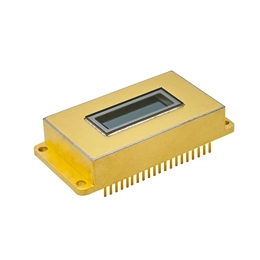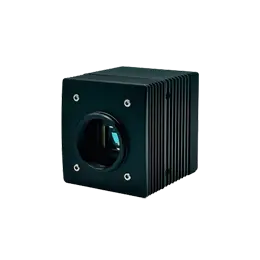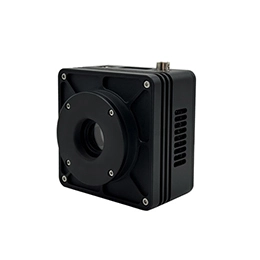In the 900 to 1700 nm window of the SWIR range, InGaAs sensors are currently popular camera technology. Compared with other methods of SWIR imaging, they have higher cost efficiency and maturity, and they are the most commonly used classification, inspection and quality control technology in machine vision applications.
InGaAs sensors provide high detection performance and fast response speed, just like silicon-based detectors work in the visible range, although their light sensitivity depends on wavelength. They are solid-state devices with no shutters or other moving parts, which makes them resistant to vibration. And vibration is common on factory floors. Compared with SWIR cameras for thermal imaging applications, InGaAs devices do not require expensive silicon or germanium lenses to utilize traditional glass optics.
Generally, InGaAs cameras for SWIR applications in industrial machine vision do not require cooling. Nevertheless, cooling the sensor can significantly reduce the dark current, thereby improving image quality. In some swir camera applications, the exposure time can also be extended.
It should be noted that cameras based on quantum dot technology, as a relatively new SWIR imaging technology, are also gaining more and more attractiveness. These devices work in a spectral band and overlap with InGaAs sensor, which makes quantum dot cameras a direct competitor to existing technologies.
Compared with InGaAs imagers, the lower quantum efficiency (QE) of quantum dot cameras is an aspect that needs to be considered. Since this leads to lower camera sensitivity, this may be considered a disadvantage. However, this sensitivity may not be as limited as originally thought. Because of the fact that in controlled machine vision applications, SWIR lighting and QE can also reasonably be expected to improve as the technology matures.
Due to the relative novelty of quantum dot cameras, they tend to have higher additional costs; however, as the technology matures, this situation may also decrease. The same is true for InGaAs cameras: As people become more and more interested in the potential of SWIR in machine vision, improvements in economies of scale, manufacturing technology, and higher yields will all become factors that reduce the cost of these two camera technologies.



